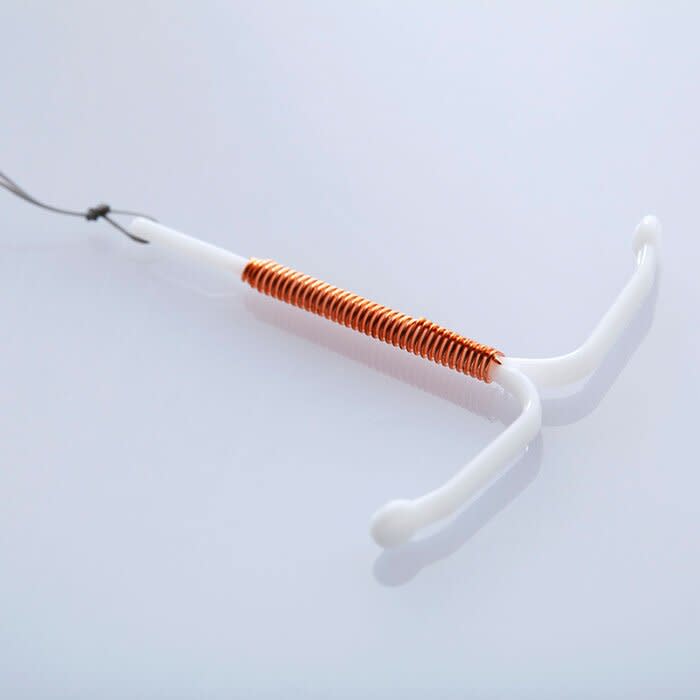Is an IUD the Best Birth Control Option for You?

Corbis Images
Have you noticed all the buzz surrounding the IUD lately? Intrauterine devices (IUDs) have seemingly been everywhere. Last week, the National Center for Health Statistics reported a fivefold increase in long-acting contraceptive use over the last 10 years among the 15-to-44 set. In early February, a study from Washington University School of Medicine in St. Louis showed that hormonal IUDs remain effective a year beyond their FDA-approved duration of five years.
Yet for many women choosing a birth control, there's still hesitation. It seems everybody knows of somebody who has an IUD horror story, from pain on insertion to intense cramping for weeks afterward. And then there's the idea that they're all dangerous. (See What You Know About IUDs May Be All Wrong.)
Terrible side effects are not at all the norm, says Christine Greves, M.D., a gynecologist at the Winnie Palmer Hospital for Women & Babies. Nor are IUDs dangerous: "There was a previous version that had a bad reputation," she says. "The string at the bottom had multiple filaments, bacteria stuck to it more easily, which caused more pelvic exams. But this IUD is no longer in use." (Find out the 3 Birth Control Questions You Must Ask Your Doctor)
So, now that we've cleared up those common misconceptions, here's what you need to know about the contraceptive:
How does it work?
There are two versions of the IUD to note: the five-year hormonal and the 10-year non-hormonal. The hormonal works by releasing progestin, which thickens cervical mucus and basically makes the womb inhospitable for an egg, says Taraneh Shirazian, M.D., assistant professor of obstetrics, gynecology and reproductive science at Mount Sinai. "It's not like the pill, which has estrogen to suppress ovulation," she says. "Women may still feel themselves ovulate each month." You'll also probably see shorter, lighter periods on this form, too.
The 10-year non-hormonal IUD uses copper, slowly released into the uterus to prevent sperm from fertilizing an egg. When you go on it, the birth control should take effect in roughly 24 hours. If you choose to go off, it's also a pretty quick reversal. "The hormonal version, like Mirena, takes a little longer-around five to seven days," Shirazian says. "But with the 10-year, Paragard, you come off it, and once it's out, that's it."
What are the pros and cons?
We hinted at one big plus earlier: If you're in the mood for lighter periods, the hormonal IUD can pack that benefit.
Beyond that, it's a one-step, long-term solution for birth control. "You can't forget about it," says Shirazian. "That's why it has an even higher rate of pregnancy prevention than the pill." That's upwards of 99 percent, by the way. The pill only has that similar efficacy if used correctly. "When a woman misses the pill, we call that user failure," says Greves. "The IUD definitely suits a woman's busy lifestyle." (As do these 10 Ways Busy People Go Strong All Day Long.)
While the IUD sounds great so far, there are cons to the contraception.
An IUD may be great for busy women and lighter periods, but inserting an IUD is much more invasive than popping a pill-and since we've all been doing this for most of our lives, whether it be Tylenol or birth control, we probably feel somewhat accustomed to the ritual. And there are a few potential side effects, like cramping for about a week as the uterus gets used to the device, as well as pain on insertion, especially if you've never had a vaginal birth. This is totally normal, and should pass pretty quickly. "I tell my patients to take a couple ibuprofen about an hour before their appointment," says Greves. (Check out more of The Most Common Birth Control Side Effects.)
The other major complication is perforation, where the IUD can actually puncture the uterus-but Shirazian assures it's super-rare. "I've inserted thousands of these, and I've never seen it happen," she says. "The odds are very small, something like 0.5 percent."
Who is it best for?
Shirazian and Greves both say they've inserted IUDs in everyone from teenagers to women in their mid to late 40s for various individual needs. "One of the biggest misconceptions is that everyone can't use it," Shirazian says. "Most women can, in fact."
However, Shirazian does peg an ideal candidate: A woman in her mid to late 20s or older, who isn't looking to get pregnant anytime soon.
Greves echoes that sentiment, as well. "It's perfect for someone who doesn't want a pregnancy soon and who does not have multiple sexual partners," she explains. "That group can be pretty broad though."
What does the future look like?
According to CDC data, long-acting reversible contraceptives like the IUD are only the fourth most popular form of birth control among women at 7.2 percent-less than half that of the pill, which remains number one in this category.
However, Shirazian thinks the more people are educated on IUDs, the more people will get on board. "It is very interesting, because we have seen an upswing recently," she says. "The biggest negative is just that people have heard about it in the past, that they were not a candidate, or that it was unsafe," she says. "But it doesn't increase the rate of pelvic infections and, unless you can have an active infection, you can put it in many different women."
Will the IUD replace the pill? Only time will tell, but it's definitely better than this birth control method.

